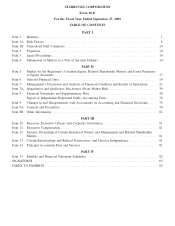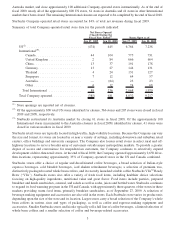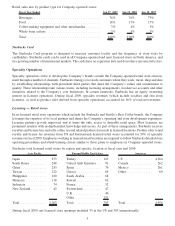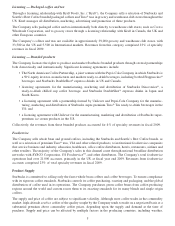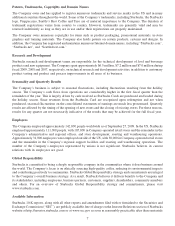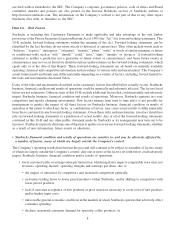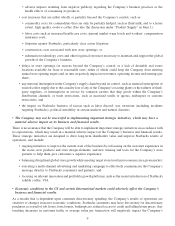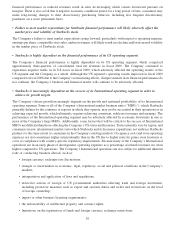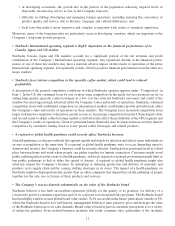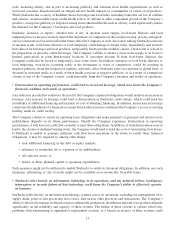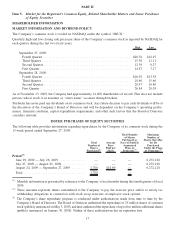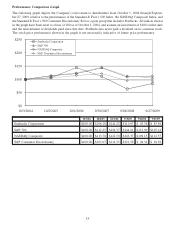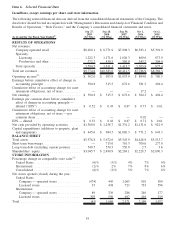Starbucks 2009 Annual Report Download - page 17
Download and view the complete annual report
Please find page 17 of the 2009 Starbucks annual report below. You can navigate through the pages in the report by either clicking on the pages listed below, or by using the keyword search tool below to find specific information within the annual report.• adverse impacts resulting from negative publicity regarding the Company’s business practices or the
health effects of consuming its products;
• cost increases that are either wholly or partially beyond the Company’s control, such as:
• commodity costs for commodities that can only be partially hedged, such as fluid milk, and to a lesser
extent, high quality arabica coffee (See also the discussion under “Product Supply” in Item 1);
• labor costs such as increased health care costs, general market wage levels and workers’ compensation
insurance costs;
• litigation against Starbucks, particularly class action litigation;
• construction costs associated with new store openings; or
• information technology costs and other logistical resources necessary to maintain and support the global
growth of the Company’s business;
• delays in store openings for reasons beyond the Company’s control, or a lack of desirable real estate
locations available for lease at reasonable rates, either of which could keep the Company from meeting
annual store opening targets and, in turn, negatively impact net revenues, operating income and earnings per
share;
• any material interruption in the Company’s supply chain beyond its control, such as material interruption of
roasted coffee supply due to the casualty loss of any of the Company’s roasting plants or the failures of third-
party suppliers, or interruptions in service by common carriers that ship goods within the Company’s
distribution channels, or trade restrictions, such as increased tariffs or quotas, embargoes or customs
restrictions; and
• the impact on Starbucks business of factors such as labor discord, war, terrorism (including incidents
targeting Starbucks), political instability in certain markets and natural disasters.
•The Company may not be successful in implementing important strategic initiatives, which may have a
material adverse impact on its business and financial results.
There is no assurance that the Company will be able to implement important strategic initiatives in accordance with
its expectations, which may result in a material adverse impact on the Company’s business and financial results.
These strategic initiatives are designed to drive long-term shareholder value and improve Starbucks results of
operations, and include:
• ongoing initiatives to improve the current state of the business by refocusing on the customer experience in
the stores, new products and store design elements, and new training and tools for the Company’s store
partners to help them give customers a superior experience;
• balancing disciplined global store growth while meeting target store-level unit economics in a given market;
• executing a multi-channel advertising and marketing campaign to effectively communicate the Company’s
message directly to Starbucks consumers and partners; and
• focusing on relevant innovation and profitable growth platforms, such as the recent introduction of Starbucks
soluble coffee, VIA.
•Economic conditions in the US and certain International markets could adversely affect the Company’s
business and financial results.
As a retailer that is dependent upon consumer discretionary spending, the Company’s results of operations are
sensitive to changes in macro-economic conditions. Starbucks customers may have less money for discretionary
purchases as a result of job losses, foreclosures, bankruptcies, reduced access to credit and falling home prices. Any
resulting decreases in customer traffic or average value per transaction will negatively impact the Company’s
9


